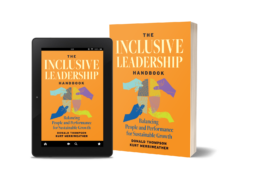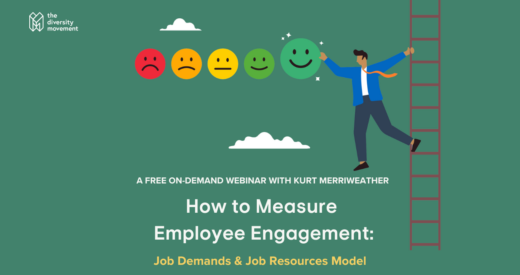Attract Talented Staff and Create High-Performing Teams with Targeted Strategy
As we begin 2023, emerging and mid-sized businesses are in survival mode — looking for ways to preserve cash and protect themselves against uncertainty. To weather the storm, organizations are placing a premium on efficiency and team effectiveness. And leaders are being asked to reduce risk, satisfy customers, and take care of their people using fewer resources and smaller budgets.
Many teams have stopped investing in their people in order to deliver higher short-term profitability. This response to uncertainty will lead to an erosion in the culture and the best people will resign — even in small organizations.
Don’t take your people for granted, because they still have options. Demand for labor is still running well ahead of supply in spite of headlines that are dominated by layoffs in big tech. Emerging and mid-sized businesses have a golden opportunity to hire and keep top talent, especially those from underrepresented and historically marginalized groups. Companies that empower inclusive teams of people from diverse backgrounds — and understand what they need to succeed — have been proven to thrive during times of recession.

When diversity, equity, and inclusion (DEI) is framed as a business growth strategy with long-term financial benefits, it’s easier for small business owners to prioritize. But with limited resources, leaders must figure out how to invest in targeted actions that align with the organization’s business strategy.
The first step is eliminating the guesswork and gathering relevant diversity and inclusion metrics in order to understand the employee experience and the organization’s current situation. This should be done in the flow of work to increase participation. Employee sentiment can be tracked over time using periodic anonymous surveys, stay interviews and targeted conversations, and information from exit interviews. With each of these methods, it’s important to gather factual evidence and reduce bias as much as possible.
Anonymous Surveys can Reveal Hidden Challenges
Leaders might assume everything is going well, but how do they know? Do employees feel professionally challenged? Are they able to do their best work? Small businesses can use anonymous surveys to compile diversity metrics that will answer these questions and gauge overall employee sentiment. Because they can reply without fear of their identity being revealed, employees can be honest about their feelings. In a small company, it’s vital that employees understand that their identities won’t be revealed and the data will be examined only in aggregate to highlight trends.
To maximize participation, surveys should be short and should include only the questions leaders need to know. Instead of yes-or-no questions, your survey should be structured so folks can rate the company culture. By including statements like the following examples and asking employees to report their level of agreement or disagreement on a scale from one to five, you can pinpoint areas of improvement – where DEI interventions can improve company culture.
- Our organization takes active measures to seek a diverse candidate pool when hiring.
- Supervisors generally assign work without any kind of bias.
- I have access to career development opportunities at the organization.
- Our organization enables me to balance my work and personal life.
- In my organization, I can be successful as my authentic self.
Stay Interviews and Honest Conversations
Regular one-on-one conversations between supervisors and their direct reports can also be sources of important information about company culture. Stay interviews, where managers ask employees what they like and dislike about their job, can also help establish trust and cultivate meaningful relationships. These conversations can also highlight issues that might lead to dissatisfaction.

Exit interviews are another powerful tool for uncovering shortcomings in an organization or management team. Some small businesses might be reluctant to invest in these exercises, as the individual is already leaving. However, exit interviews are a chance to gather important data, like “What should we know and improve?” or “What would have made you stay?”
When employees feel free to speak candidly about their experience, an organization has an opportunity to learn what benefits, perks, and parts of the culture will help boost staff retention.
The knowledge gained from these various honest conversations can inform specific plans for the individual or can be incorporated into action plans for the team or organization.
Craft a Plan with Specific, Measurable Goals
Once you have the appropriate data and you’ve identified what is going well and what needs to improve, it’s time to create action plans that include SMART goals.
SMART – or Specific, Measurable, Attainable, Realistic, and Time-bound – goals will help you create a strategy that will have a higher degree of success. Without goals and milestones, it’s easy to get overwhelmed with everything that needs improvement. It’s also easy to waste time on activities that might be easy or attractive, but aren’t tied to the company’s bottom line. Pick 1-3 things at a time to focus on so progress can be more easily tracked. Depending on your goals, tactics might include targeted training on topics like Inclusive Language on the Job or Improving the Resume Review Process. Employees might also prefer their training in short, easy-to-understand videos, which provide quick answers to DEI questions.
With small teams, everyone needs to understand what they are working toward and why it’s important to business success. Leaders can drum up support for their initiatives by crafting narrative stories: explaining what the problem is, how it affects employee performance, the steps the company is taking, and what success will look like. These stories are also an opportunity to set expectations for how long the process will take.
Talk About Your Actions and the Progress You’re Making

Having specific goals enables leaders to demonstrate the real progress they – and the company – are making. Being transparent about your wins, and the work that still needs to be done, demonstrates your organization’s commitment to a more inclusive workplace. Part of that communication should be the value of the workforce data that’s being collected and how the information will be used.
Many organizations survey their teams frequently, but don’t explain to employees how the data is being used. If the organization doesn’t act on feedback from surveys and targeted conversations, then employees can become discouraged and reluctant to share their opinions. But when employees see concrete action based on their feedback, they will feel more valued by the organization and be more likely to participate in future surveys and assessments. Communication with the team should also happen on a consistent, predictable basis. Timely communication can counteract the uncertainty members of the organization may be feeling.
Workforce Diversity Metrics show what Matters to the Business
Surveying the demographic makeup of a small organization might be easy, but getting accurate qualitative data on employees’ opinions and feelings is less so. That’s why companies of all sizes should be deliberate about collecting all sorts of information about the organization’s culture and health.
When a company is disciplined about measurement, it can launch strategies that incorporate DEI into hiring talent, staffing teams, and developing new initiatives to drive growth that fit employees’ needs and business objectives. Results of those initiatives can be tracked and outcomes can be tied directly to the bottom line. Small business owners will be able to see why making room for diversity, equity, and inclusion is worth the time and the financial investment.
For small businesses searching for options that fit their unique needs, DEI Navigator is the most cost-effective program to ensure long-term success. The subscription platform offers a budget-friendly monthly cost with an enormous return-on-investment via direct help and support. Exclusive content includes monthly webinars on topics such as “Measuring the Effectiveness of DEI” and “Recalibrating Recruitment for Retention.”
Subscribers also get immediate access to an award-winning team of experts, digital learning courses, a Best Practices Library (more than 300 curated how-to guides, articles, whitepapers and FAQs), more than 600 short informative videos and a monthly newsletter to ensure you are up to date on news and trends news and trends that may impact your teams and people. Contact us today for more information.
Kurt Merriweather, CDE, is an accomplished product strategist and business executive. He is co-founder and Vice President of Innovation at The Diversity Movement. Connect with him on Linkedin.






